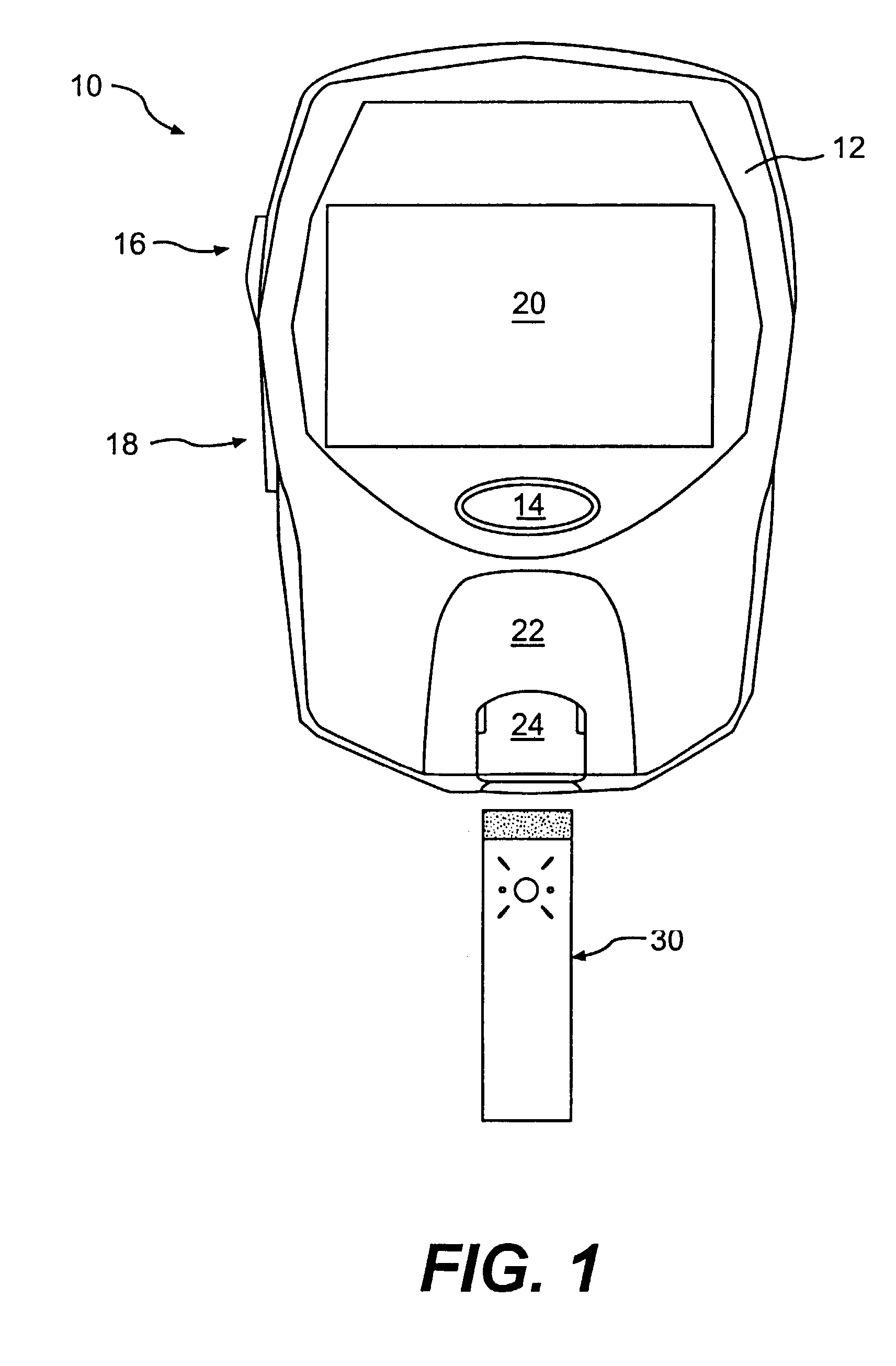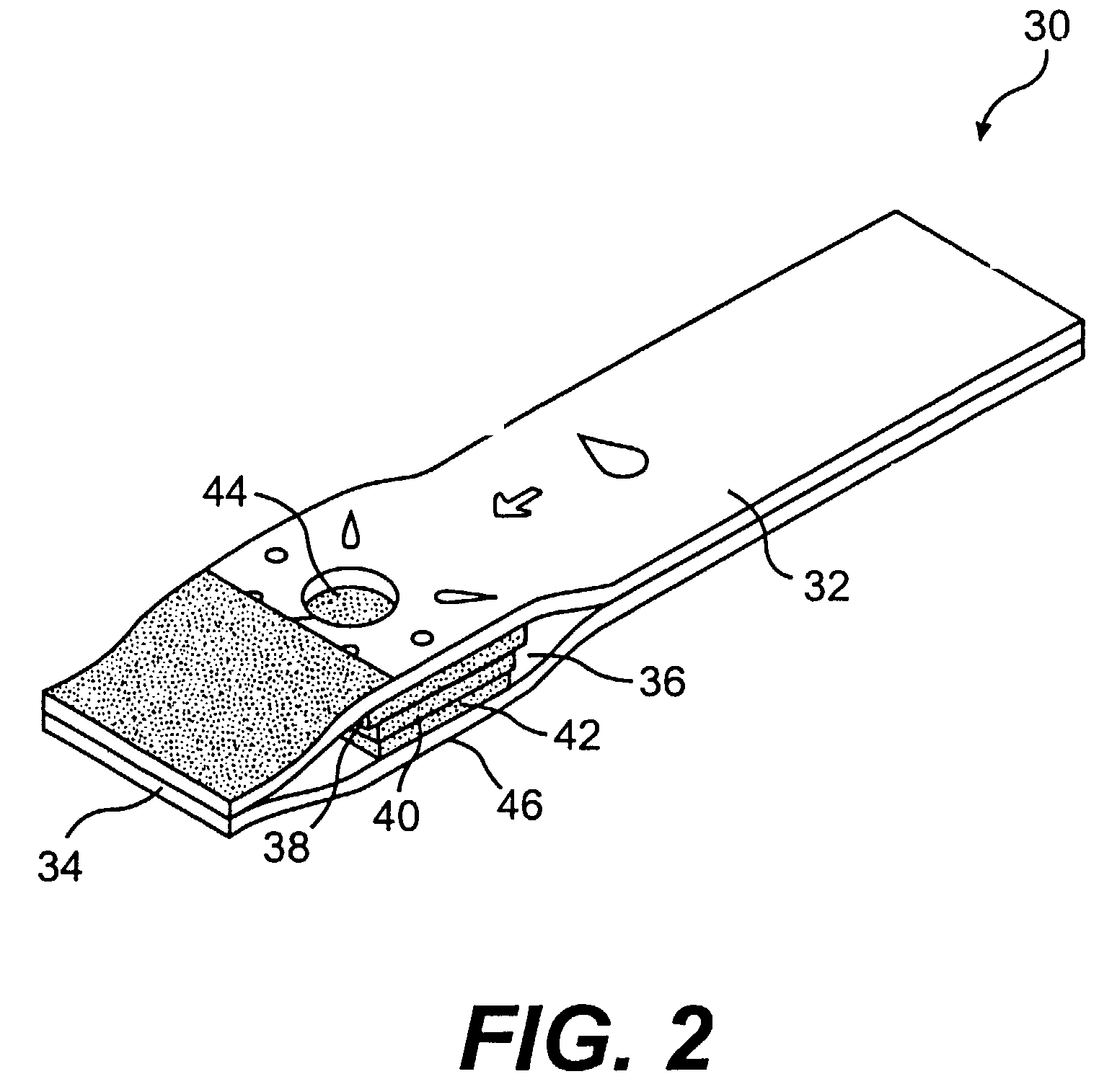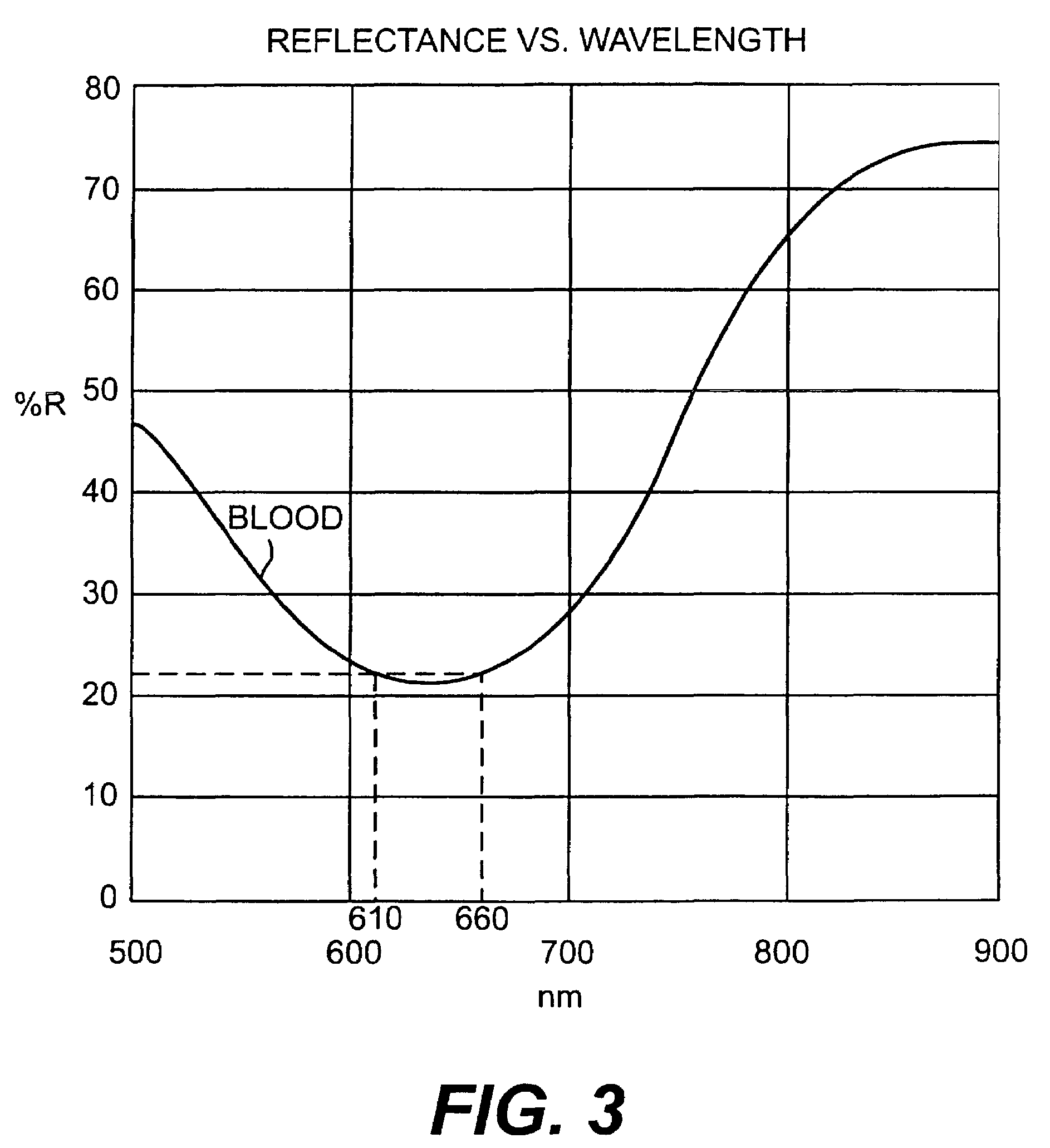Distinguishing test types through spectral analysis
a spectral analysis and test type technology, applied in the field of determining test types, can solve the problems of long-term complications, diabetics can have abnormally high blood sugar levels known as hyperglycemia, and impaired ability to regulate glucose levels in their blood
- Summary
- Abstract
- Description
- Claims
- Application Information
AI Technical Summary
Problems solved by technology
Method used
Image
Examples
example 1
% R Method (Glucose Control Detection Using Reflectance)
[0075]Glucose Control detected when Ch2 % R is at least 3.5% R less than the Ch1 % R at the conclusion of the test.1 1 Actual % R cutoff value varies with dyes, chromogens and wavelengths used.
[0076]If Ch2 % RCh1 % R−3.5% R Then[0077]Glucose Control sample detected[0078]Else[0079]Blood sample detected
example 2
K / S Method (Glucose Control Detection Using K / S)
[0080]Glucose Glucose Control detected when Ch2 K / S is at least 0.3 less than that of Ch1 K / S at the conclusion of the test.2 2 Actual K / S cutoff value varies with dyes, chromogens and wavelengths used.
[0081]If Ch2 K / SCh1 K / S−0.3 Then[0082]Glucose Control sample detected[0083]Else[0084]Blood sample detected
example 3
Gatlng (Control Detection with Glucose Level Gating)
[0085]Glucose control solutions are manufactured at known glucose concentrations. Certain glucose concentrations can immediately be excluded from the need for spectral analysis by glucose concentration level alone. For example, blood detection is indicated, but when final glucose value exceeds 400 mg / dL, control solution is identified. In this case, no spectral curve shape analysis would be required.
[0086]If Final Glucose>400 mg / dL Then[0087]Blood sample detected[0088]Else[0089]Spectral curve shape must be analyzed to determine sample type
[0090]In accordance with an illustrative embodiment of this invention, and as described above, meter system 10 incorporates a second LED having a wavelength of 610 nm. The second LED operates to measure a second point along the spectral curve of the test element inserted into the meter. It is this second LED, acting in conjunction with the strip sensor, that allows the meter system acco...
PUM
| Property | Measurement | Unit |
|---|---|---|
| Wavelength | aaaaa | aaaaa |
| Wavelength | aaaaa | aaaaa |
| Volume | aaaaa | aaaaa |
Abstract
Description
Claims
Application Information
 Login to View More
Login to View More - R&D
- Intellectual Property
- Life Sciences
- Materials
- Tech Scout
- Unparalleled Data Quality
- Higher Quality Content
- 60% Fewer Hallucinations
Browse by: Latest US Patents, China's latest patents, Technical Efficacy Thesaurus, Application Domain, Technology Topic, Popular Technical Reports.
© 2025 PatSnap. All rights reserved.Legal|Privacy policy|Modern Slavery Act Transparency Statement|Sitemap|About US| Contact US: help@patsnap.com



